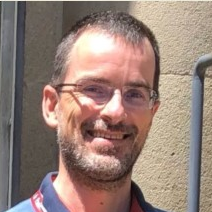Advances in Additive Manufacturing of Bioceramics
A special issue of Materials (ISSN 1996-1944). This special issue belongs to the section "Biomaterials".
Deadline for manuscript submissions: closed (31 December 2019) | Viewed by 2964
Special Issue Editors
Interests: cellular glasses and glass-ceramics; glass sintering; glass and glass-ceramic matrix composites; polymer-derived ceramics; silicate bioceramics; phosphate ceramics; additive manufacturing of ceramics
Special Issues, Collections and Topics in MDPI journals
Special Issue Information
Dear Colleagues,
It is my pleasure to invite you to submit a manuscript (full paper, communication, or review paper) to the present Special Issue of Materials. This is fundamentally intended to expand concepts already outlined in the previous Special Issue “Bioceramics 2016”. In introducing that issue, we referred to the excellent definition of bioceramics, provided by Prof. Hench (L.L. Hench, J. Am. Ceram. Soc. 74 (1991) 1487-510), as “specifically designed ceramics for the repair and reconstruction of diseased or damaged parts of the body”. The multiplicity of additive manufacturing methods undoubtedly offers significant opportunities of ‘specific design’, due the distinctive control of both micro- and macro-structures, in particular for the precise replication of a geometry directly from a 3D model, by adding material in a layer-by-layer approach. The exploration of the complex interconnection between formulations, structures (from nano- to millimiter scale), specific applications and additive manufacturing methods constitutes a general target for the Special Issue.
Prof. Dr. Enrico BernardoProf. Jens Guenster
Dr. Andrea Zocca
Guest Editors
Manuscript Submission Information
Manuscripts should be submitted online at www.mdpi.com by registering and logging in to this website. Once you are registered, click here to go to the submission form. Manuscripts can be submitted until the deadline. All submissions that pass pre-check are peer-reviewed. Accepted papers will be published continuously in the journal (as soon as accepted) and will be listed together on the special issue website. Research articles, review articles as well as short communications are invited. For planned papers, a title and short abstract (about 100 words) can be sent to the Editorial Office for announcement on this website.
Submitted manuscripts should not have been published previously, nor be under consideration for publication elsewhere (except conference proceedings papers). All manuscripts are thoroughly refereed through a single-blind peer-review process. A guide for authors and other relevant information for submission of manuscripts is available on the Instructions for Authors page. Materials is an international peer-reviewed open access semimonthly journal published by MDPI.
Please visit the Instructions for Authors page before submitting a manuscript. The Article Processing Charge (APC) for publication in this open access journal is 2600 CHF (Swiss Francs). Submitted papers should be well formatted and use good English. Authors may use MDPI's English editing service prior to publication or during author revisions.
Keywords
- Bioglasses and bioceramics
- Porous scaffolds
- Additive manufacturing
- Ordered porosity
- Bone tissue engineering
- Cell proliferation
- Metal ion release







